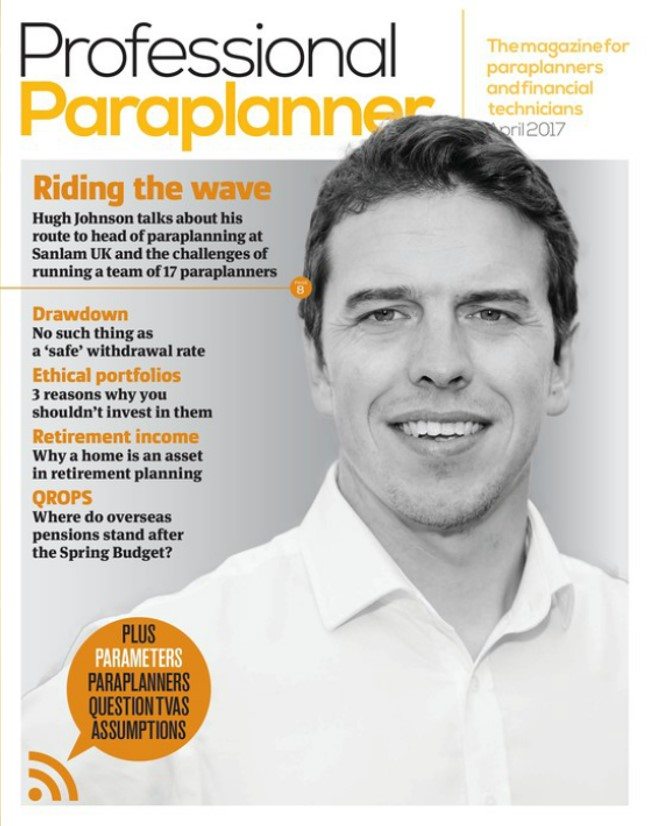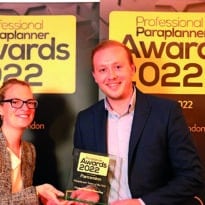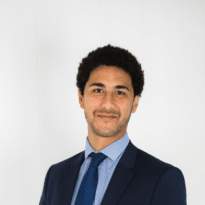Riding the wave
Hugh Johnson talks about his route to head of paraplanning at Sanlam UK and the challenges of running a team of 17 paraplanners.
Hugh Johnson, head of paraplanning at Sanlam UK, would be the first to admit that he has benefited from the rise in profile and the incredible demand for paraplanning in the past few years. It has also allowed him to decide where he wants to work and to follow one of his passions, surfing.
Hugh joined Sanlam in September 2013 as a paraplanner, and as the paraplanning team rapidly grew, his experience and knowledge quickly saw him become a team leader. He stepped into his current role in August 2016, now heading up 17 paraplanners in a team that is continuing to grow.
Sanlam operates a centralised paraplanning team, based in Bristol, serving around 80 advisers spread around the UK. When Hugh joined it was operating as a flat structure but growing at a pace that needed some hierarchy built in, which saw the paraplanning unit divided into three teams – London and South East, Midlands and South West, and North West/North.
This was done for two reasons, Hugh explains. The first was in order to give advisers and clients some continuity of contact, and to introduce a more personal element to the working structure. “By and large the teams will service the advisers in their areas, with the flexibility for teams to respond to workflow demands and for specialists in each area to take on specific work where there is need,” Hugh says. He cites dealing with the high levels of occupational pension cases being an example of the latter.
The second reason was to establish a formal route for career progression within the team to help to build stability into the unit and retain staff in a highly competitive market.
Path into paraplanning
So how did Hugh get to his current position? He began his career in financial services in 2008, working as a foreign exchange broker in the City of London, buying and selling currency for high net worth private clients and corporates. “It was great job and I really enjoyed it but after three years I began to realise it wasn’t giving me what I wanted. Ultimately currency dealing is quite one-dimensional and I wanted to broaden my horizons and add real value to clients, friends and family. My friends were solicitors, accountants and architects, and I could see the direct value they offered.”
One of the people he was trading for was wealth manager and he suggested Hugh should become a financial adviser. “He offered me a trainee adviser job and I went to join him for a year.
“This was at a time, 2012, when paraplanning was really beginning to be recognised in its own right and what I realised was that the trainee role was in fact a paraplanning role.
“I was learning so much that when I felt it was time to move on, I knew staying in paraplanning would allow me to start providing that real value to people while also learning about the advice industry inside out.”
At the time that he made the decision to move job, he also made the decision to change his lifestyle and move out of London. “I’ve always like the outdoors, surfing and sailing and sports like that and with paraplanning being an ‘in demand’ role, it gave me the opportunity to look around and, to an extent, chose where I wanted to be,” Hugh says.
That turned out to be in Bristol, with its easy access to rivers and sea, and at the Jelf Group.
It was at Jelf that Hugh honed his paraplanning skills, working directly for the group‘s founder, Chris Jelf. “Chris is a very successful adviser and working with him I got to work with some fantastic clients. Also, it gave me exposure to the full spectrum of advice, from simple protection cases to tax planning for people with £20m+ of investable assets. It was baptism of fire but a great one because the learning curve was so steep!”
Indeed, it was his intense learning experience at Jelf that Hugh attributes to helping him get to the position he is at in Sanlam.
“It is a completely different set up in Sanlam, it’s a larger firm and the paraplanning is pooled but I’ve been lucky in that the paraplanning function was developing when I joined and I was able to be a part of the development process. Which has been an experience in itself.”
Sanlam is a restricted whole of market operation, which, Hugh explains, means it has a suite of wrappers, products and investments “which from a financial planning perspective has most bases are covered”. But if that offering doesn’t best meet the client’s needs, advisers have the capability to go whole of market to find something that does. “For example, Sanlam doesn’t have any investment with an element of guarantee, so advisers will look outside the Sanlam restricted offering where that type of product is needed.”
Team leader to head of department
Describing the differences between the role of team leader and his position as head of the paraplanning unit, Hugh says they both have their challenges.
“Team leaders are responsible for the workflow in their area, so the challenge will be balancing the number of cases coming in with deadlines to meet and turning those around in good time while producing good quality work.
‘That means picking the right paraplanner for each case and equally dealing with the advisers and managing expectations where necessary as point of reference for that region. So they have that accountability for workflow and quality.”
As head of department, he says he faces the same challenges but across all the teams “and I’m the end of the line for any issues”.
He also has accountability for projects, liaising with all the appropriate stakeholders in the business – compliance, business development etc – to ensure each project delivers.
“I’m also responsible for dealing with senior management and the board. That’s a big difference because while departmental managers might see the day-to-day challenges that are faced by the team, the board just sees the figures and wants to know the job is getting done. You have to bear this in mind in the way you escalate information”.
“What I find works is to keep things very factual and I make sure that the MI I report on is clear and says what it needs to say. Where it reflects that there are areas the team needs to improve on, I take accountability for that.”
Paraplanner training
With qualified paraplanners at a premium, Sanlam operates its own training programme, taking on junior paraplanners and taking them through a three-stage process.
That process starts with protection and mortgages, moves into investment and then into retirement planning, including pensions and drawdown. A senior paraplanner is appointed to each area and they work with the junior paraplanner as they go through the training.
“As part of the training, juniors must undertake a presentation, a mini-test, and sign off report,” Hugh explains. “When the paraplanner has got to the position where they have been writing a few reports and the training paraplanner deems they are ready to go through the sign off process, they have to submit three reports that go through all the checks with three green lights in a row and then they get signed off.
“We have a major and minor system. So if they receive a couple of minors they might go through, but if there’s a major error then the clock resets and they have to get three in a row again. Once the three cases have gone through they are signed off for that area and they can deal with cases without 100% checking. We go through each of the three areas on that basis.”
Training is a year long process and where possible it is aligned with the relevant CII exams. “So by the end, the junior will have been signed off in each business area and passed the appropriate exam, so they will be diploma qualified and fully versed in all the product areas and our processes associated with them.
“It’s a system that has worked very well,” Hugh adds, so much so that one of the paraplanners who went through the training is now entering Sanlam’s trainee adviser programme. “So in two years he has gone from being a graduate to a very competent paraplanner, to now entering the adviser training programme.”
Consequently, Hugh says he is currently looking for a junior to Level 4 paraplanner with one or two years’ experience.
Aims and ambitions
Asked about his aims and ambitions, Hugh says: “I have a high level longer-term objective to be at the forefront of making financial planning an accessible and integral service that more people benefit from. I think this will be achieved through harnessing technology to fill the advice gap, and by smart process design to deliver an exceptional service for the cash rich, time poor.
“It’s not so far removed from my initial reason for entering the market, which is doing something that is able to add value for individuals. It’s about putting people like me in a position where they not only feel compelled to get advice, but can access it easily.”
Working day of a head of paraplanning.
“I like to get in early by 8am or before and use that early morning time to assess what has come in; what kind of cases and what business areas and specialisms may be needed and allocate the cases accordingly. I aim to get all cases allocated within 24 hours.
Recently, we’ve been reviewing our processes and how we can improve and enhance them, which has been a major project for me. Currently, I’m reviewing our suitability reports and how we can make them more digestible, client friendly and optimised to work with some of the tech we are rolling out via our back-office system.





























